Early Bird Deadline
30 November 2025
Judging
Date
23 & 24 March 2026
Winners Announcement
22 April 2026
30 November 2025
23 & 24 March 2026
22 April 2026

In this engaging interview, we sit down with Émilie Steckenborn, Wine Development Manager - North Asia at LVMH Moët Hennessy and the host of the "Bottled in China" podcast. Émilie takes us on a journey through the world of wine, sharing her expertise on the art of storytelling in the Asian market, emerging wine trends, and strategies for forging deep connections with consumers. Join us as we uncork the secrets to success in North Asia's vibrant wine industry.
We emphasize storytelling throughout the Moët Hennessy Wine Estate portfolio in launches, events, and customer touchpoints to bring the brand to life.
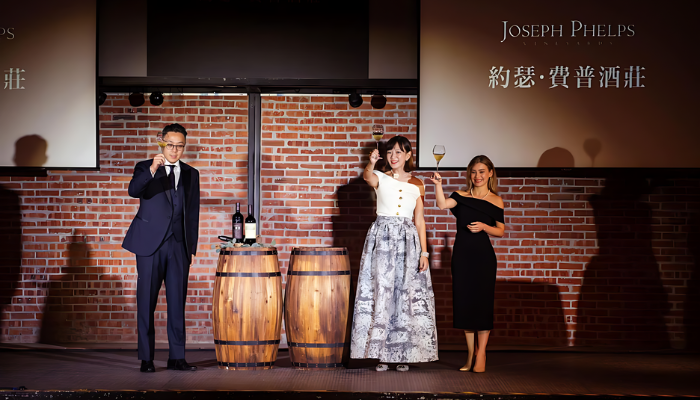
Image: Joseph Phelps Launch
Although customers in Asia may not be able to visit the vineyards, storytelling helps bridge the gap and create a personal connection. From online training to simply setting up decorations that reflect the brand's color identity, the story is complemented by elements that help customers "feel" the brand. It’s all in the small details, for instance, during our recent Joseph Phelps launch, we had a pianist cover his favorite songs. This helped to tie an element of authenticity to our launch and to create more impactful storytelling.
In 2016, I launched Bottled in China as a passion project. It was created to share the stories of trailblazers in Asia. I wanted to give the world a different perspective than the predominantly alarming news about food and drink in China.
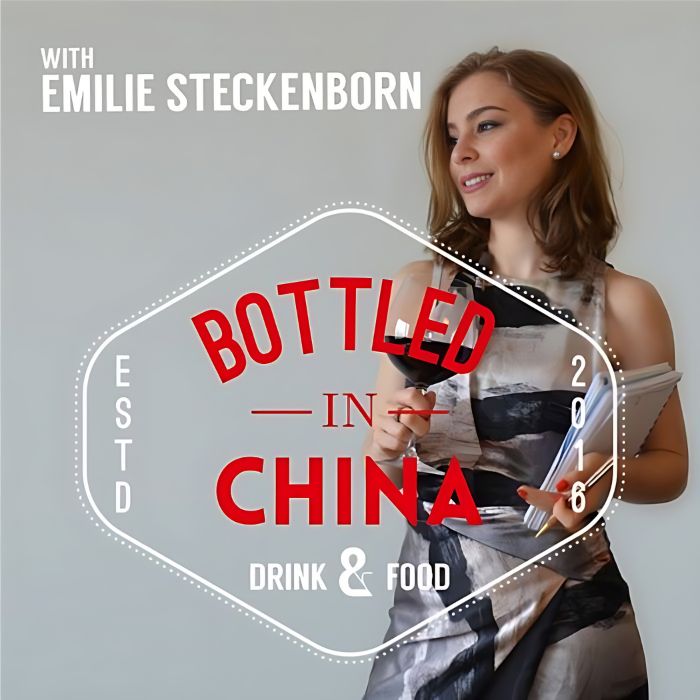
Image: Podcast - Bottled in China from The Bottled Show
Starting in 2020, it expanded to include a global trend perspective, hosting conversations with F&B thought leaders and business leaders around the world. With over 170 episodes under our belt, we’ve covered everything from wine in China, to nanotechnology, leadership, culture, and much more! Today, Bottled in China’s goal remains the same; to share our passion for food and beverage with the world with a unique angle on Asia.
The Asian market is constantly shifting and the level of consumption from country to country is very diverse, making it hard to draw sweeping conclusions.
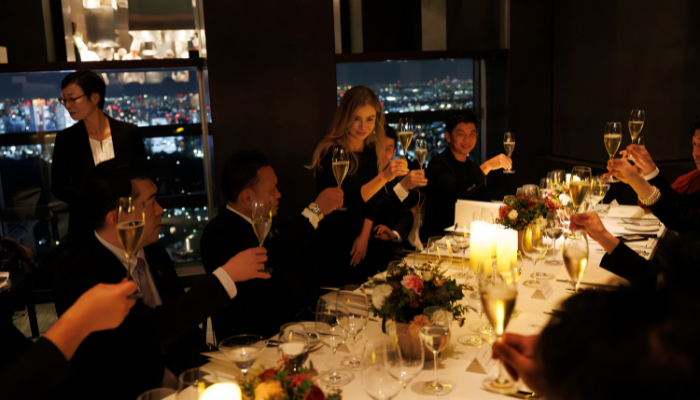
Image: Émilie Steckenborn in Japan
Nonetheless, Burgundy and Champagne remain highly sought after in more established wine markets like Hong Kong and Japan. Excitingly, I have noticed a growing appreciation and recognition for Chinese and Japanese wines within the wine community.
South Korea has experienced remarkable growth since the onset of the pandemic.
If Thailand lowers its taxes, that could be a big deal for the industry.
Moreover, natural wines remain popular in established cities across Asia, particularly in China’s tier-one cities.
When it comes to wine selection in China, brand reputation is a vital factor, especially in social contexts where it may be consumed or gifted.
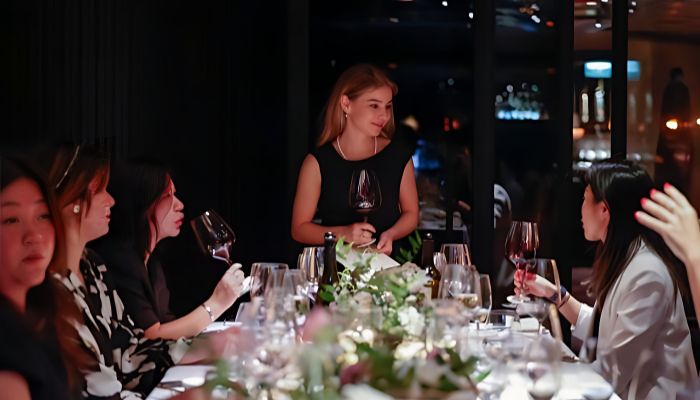
Image: JPV Piano Lunch, Hong Kong
While there’s a lot of focus on e-commerce in China, offline retail continues to be a key part of wine purchasing. Interestingly, highly engaged wine consumers are opting for personalized services and recommendations that online retailers don’t offer.
After over a decade working in wine in China, I realize that subtle behaviors are key. Here are my top lessons:
Consumers are brand driven and having a strong brand goes a long way!
There is no one market. China is incredibly fragmented. Focus on which markets you truly want to penetrate and work closely with your partners. Activate with events and dinners.
Don’t oversell on e-commerce. Most big sales are through wholesalers or DTCs. Protect your brand by not over-discounting through e-commerce.
In other markets, PPT might not be as used. But I’m a first believer in visuals when conducting wine training. The PPTs I create for educational material are video-based with key sentences that anchor our story and support wine appreciation. The goal is to use the presentation to transport our consumers and trade to the winery through videos and stunning imagery.
A well-crafted presentation is incredibly important as language might be a barrier in some markets and because we need to capture our audience's attention within a short period of time. In addition, I find that many North Asian participants tend to be a bit shy and therefore I integrate a lot of closed questions or multiple choices to create engagement and support knowledge retention.
Our North Asia teams have done amazing work with their marketing campaigns and events. For example, the Taiwan team launched a new Terrazas packaging in March, leveraging our global messaging "where the earth meets the sky". They cleverly took inspiration from the Andes by organizing a hike for media and KOLs to explain the brand's sustainability, mountain freshness, and winemaking.
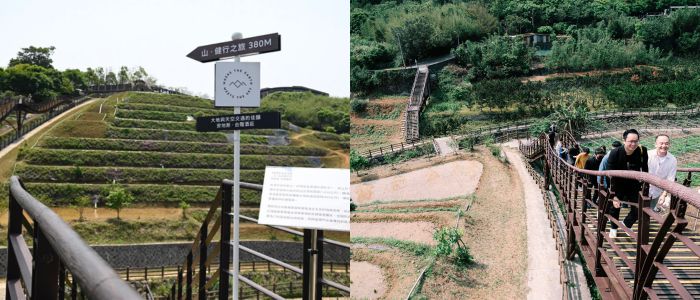
Image: Terrazas Taiwan
Recently, I also had the pleasure of attending Wonderscape, a global brand initiative of Cloudy Bay, in China. The team worked with curators in the food, music, and art space to give the brand a modern and fresh vibe, along with local cuisine that matched the Cloudy Bay Chardonnay and Pinot Noir. The event was shared on social media, and it earned over 2 billion impressions!
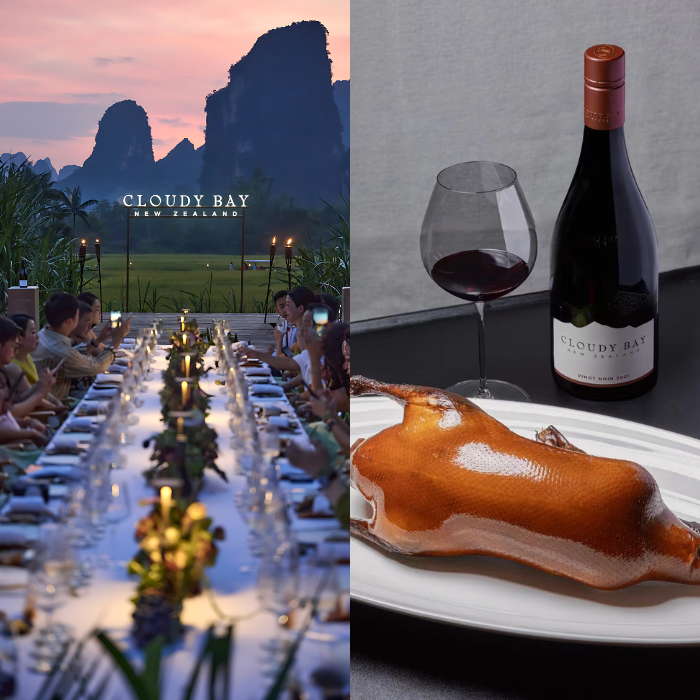
Image: Cloudy Bay Wonderscape/ Duck & Pinot
Ao Yun joined forces with La Place de Bordeaux last year, making them the first Chinese wine to be featured at the renowned Bordeaux trading place. This marks a big step forward for the Chinese wine industry, and we are looking forward to the possibilities of our brands paving the way for new wine regions. We have also recently (re)introduced Joseph Phelps to North Asia, which is a thrilling addition to our Wine Estates portfolio.
Despite the global economic slowdown, the future of wine in North Asia looks to be bright and dynamic. To ensure success, it is essential for brands to work closely with their importer/distributor, and to visit the market to connect with consumers through local brand activities. If a brand wishes to be successful, it must be willing to put in the effort alongside its distributor in developing a winning strategy and managing the project. It is not enough to leave the responsibility solely in the hands of the importer; both parties must be willing to collaborate to build a strong presence in the market.

Image: Émilie Steckenborn
I've been advocating for Chinese wines for more than 10 years, and finally, there seems to be some enthusiasm around them. As Chinese winemakers continue to create exquisite wines, particularly in places like Yunnan with Ao Yun, I'm delighted that people are starting to let go of their preconceived notions and give these novel wines a chance.
[[relatedPurchasesItems-38]]
As we conclude our conversation with Émilie Steckenborn, it's clear that the North Asian wine industry is a dynamic and evolving landscape filled with exciting possibilities. From the fine art of storytelling to the growing appreciation for Asian wines, Émilie's insights provide a valuable glimpse into this captivating world. Her passion for sharing the stories of trailblazers and her dedication to promoting Moët Hennessy’s wines in Asia paint a promising future for the industry. While we eagerly anticipate the next big development emerging from Asia, one thing remains certain: Émilie Steckenborn's expertise will continue to shape the narrative of Moët Hennessy’s wine journey in North Asia.
In conversation with Malvika Patel, Editor and VP, Beverage Trade Network
Show your wines where it matters. Get your products tasted by top sommeliers, buyers and experts at the London Competitions — enter now.